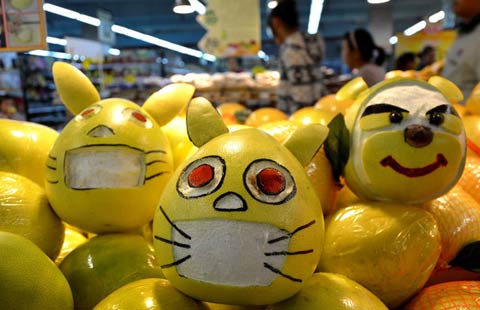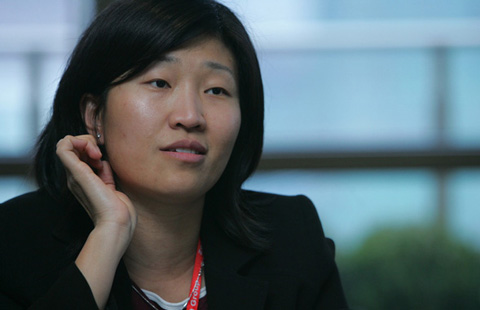African families love Chinese brands
Updated: 2015-04-20 09:13
By HOU LIQIANG(China Daily)
|
||||||||
Whether they are in the lounge, in the kitchen or elsewhere in their homes, Africans are now being given a front-row view of how their world, and the world of trade, is changing.
Their guides are the appliances they use to make their lives easier, appliances that used to carry names such as Philips, Samsung and Sanyo, but that now increasingly bear names such as Haier, Hisense and Shinco.
The prevalence of these names is the result not only of the highly competitive prices at which they are sold, but also of an unrelenting drive by Chinese companies to innovate and to localize everything they sell.
In turn, the success of the likes of Haier, Hisense and Shinco in localizing their products for Africa is spurring other Chinese home appliance and electronics companies to make similar efforts, looking to cash in on an increasingly prosperous continent with its growing middle class and lower labor costs.
Broad acceptance across the continent of Chinese appliance brands is still some distance off, but once that process is well under way it will suggest a fundamental shift in sentiment about anything made in China.
What is driving Chinese appliance makers to Africa is not just its undoubted economic promise, but a problem they now face at home: market saturation, which is forcing them to broaden their horizons as they look to keep or increase market share.
More than 45 percent of the refrigerators, washing machines and TVs in the world were made in China, a report by the Development Bank of Singapore in 2013 said. Seventy-five percent of air conditioners and small appliances were made in China, the report said.
China's experience in supplying such goods means its companies have gained expertise in gauging consumer needs. But Africa, a market with widely varying markets from region to region and country to country, presents particular challenges.
Economic growth in sub-Saharan Africa is particularly strong, and the home appliance market is driven by population growth and the rise of the middle class, said Roberto Fogliata, a home appliances specialist responsible for sub-Saharan Africa for the international market research company GfK.
Standard Bank of South Africa said last year that the middle class in Africa had grown substantially over the past 14 years.
In a report titled Understanding Africa's Middle Class, it said there were 15 million middle class households in 11 of sub-Saharan Africa's top economies last year, 230 percent higher than in 1990. The GDP of those economies combined had grown tenfold since 2000, it said.
Thomas Verryn, research manager, sub-Saharan Africa, for the London-based market research company Euromonitor International, says: "Significant growth is expected in the coming years for sub-Saharan Africa. The sub-continent shows strong GDP growth, with an increased demand for both consumer electronics and appliances. Increased urbanization will also drive growth."
Last year, China exported 74.05 million TVs, 24.3 percent more than in 2013, and the value of sales was $13.55 billion, 22.6 percent more than in 2013.
About 23 million fridges were exported, 9.5 percent more than in 2013.
One thing standing in the way of such exports to Africa is high customs duties in many countries, and this is prompting companies to localize manufacturing in the continent.
One of the first Chinese home appliance makers to enter the African market was Haier, in Nigeria in 2001. It has also been in Tunisia since 2012.
In Nigeria, Haier, whose headquarters is in Qingdao, Shandong province, sells refrigerators, freezers and air conditioners. It employs 200 people on its production line and can produce 500,000 fridges a year.
"Just five years after we opened the factory, Haier's refrigerators and freezers had become the top sellers in the market here, and they are still No 1," says Zhang Qingfu, managing director of Haier's Middle East and Africa market.
Haier has five research and development centers worldwide and aims to tailor its products to various regions, Zhang says.

 Premier Li holds welcoming ceremony for Indian PM Modi
Premier Li holds welcoming ceremony for Indian PM Modi
 Saved by a sunroof
Saved by a sunroof
 Unusual but true: Japan's bridge a nightmare for drivers
Unusual but true: Japan's bridge a nightmare for drivers
 A look into Shenzhen smart watch assembly line
A look into Shenzhen smart watch assembly line
 Cannes Film Festival unrolls star-studded red carpet
Cannes Film Festival unrolls star-studded red carpet
 Amazing artworks in supermarkets
Amazing artworks in supermarkets
 Top 10 venture investors in the world
Top 10 venture investors in the world
 Ten photos you don't wanna miss - May 14
Ten photos you don't wanna miss - May 14
Most Viewed
Editor's Picks

|

|

|

|

|

|
Today's Top News
Premier Li says talks with Modi 'meet expectations'
A bilateral treaty's potential praised
PBOC confirms debt-swap plan
US and Cuba to hold another round of talks
US would consider military force to defend Gulf nations: Obama
Xi to give Modi a hometown welcome
Aviation, railway top Li's agenda for Latin America
Cui rebuffs US stance on
S. China Sea
US Weekly

|

|







